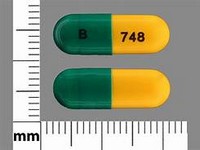duloxetine
CLINICAL USE
Moderate to severe stress urinary incontinenceDepression Diabetic peripheral neuropathy
DOSE IN NORMAL RENAL FUNCTION
Incontinence: 20–40 mg twice daily Depression and diabetic peripheral neuropathy: 60 mg daily
PHARMACOKINETICS
DOSE IN RENAL IMPAIRMENT
GFR (mL/MIN)
30–50 Dose as in normal renal function; start with a low dose10–30 Start at low dose and increase according to response
DOSE IN PATIENTS UNDERGOING RENAL REPLACEMENT THERAPIES
IMPORTANT DRUG INTERACTIONS
Potentially hazardous interactions with other drugs
ADMINISTRATION
Reconstition
–
Route
Oral
Rate of Administration
–
Comments
–
OTHER INFORMATION
In CKD 5 there is a 2-fold increase in C max and AUC. The renally excreted metabolites 4-hydroxy duloxetine glucuronide and 5-hydroxy, 6-methoxy duloxetine sulphate were 7–9 times higher than in people with normal renal function
